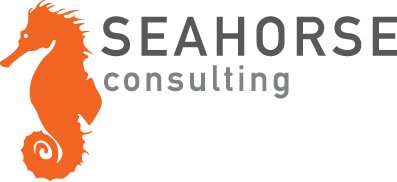Watts, Weight & Wind
What the Tour de France Teaches Us About Key Performance Indicators
I’m a terrible sports fan — with one near-religious exception.
Each July, the Tour de France — arguably the greatest sporting event in the world — takes place over three grueling weeks. The world’s top cyclists, supported by teams of coaches, nutritionists, mechanics, and data analysts, battle it out across 2,000+ miles of French roads that wind through the Alps and Pyrenees, before arriving at the boulevards of Paris.
This year, the Tour was won by Slovenian phenomenon Tadej Pogačar, who claimed his fourth victory. And in one of the most thrilling final stages in recent memory, Pogačar and Wout van Aert went head-to-head on the steep climb through Montmartre, both somehow finding electrifying acceleration after weeks of grinding effort.
It’s a race defined by courage and calculation — and offers compelling insights into the role of Key Performance Indicators (KPIs) — both in cycling and in business.
From Heart Rates to Dashboards: The Metrics That Win Races (and Businesses)
Cycling has been transformed by technology. Sensors, power meters, fueling models, and real-time telemetry now guide every training session and race day. And these tools have unlocked a new set of Key Performance Indicators (KPIs) — ones that measure not just effort, but efficiency, sustainability, and timing.
These same principles apply to high-performance finance. Below are five core cycling metrics, each paired with a business equivalent, that demonstrate how KPIs combine to deliver sustained, world-class performance.
🚴♂️ Power = Revenue
Power is the cyclist’s raw output — the watts they produce with every pedal stroke. In business, that’s revenue: the energy that drives everything forward. It’s essential. It’s measurable. And it’s something every rider — and every company — rightly chases.
But does that mean the most powerful rider always wins the Tour?
Or that the biggest company always comes out on top?
Not even close.
FP&A Insight: Revenue is essential — but it’s the first of many interdependent performance drivers. Maximize it, yes — but don’t lose sight of the resources you’re using to achieve it.
⚖️ Power-to-Weight = Operating Margin
In cycling, power-to-weight (watts per kilogram) determines how efficiently a rider climbs mountains — critical to winning the Tour. In business, operating margin plays a similar role — showing how much profit a company retains from each dollar of revenue.
A high-power rider weighed down by excess can’t compete in the mountains. Likewise, a high-revenue business with low margins won’t go far when the incline hits.
FP&A Insight: Revenue is great, but margin is the measure of health. Focus on efficiency, not just scale.
🌬 Aerodynamics = Cycle Time
Aerodynamics in cycling is about reducing drag — cutting through wind with less resistance. In business, that’s your cycle time: how long it takes to make a decision, close a deal, or deliver a forecast.
Streamlined riders go farther with less effort. Streamlined businesses move faster with less friction.
FP&A Insight: Identify bottlenecks. Accelerate workflows. Time saved is energy preserved — a key to competitive advantage.
🔋 Energy Management = Burn Rate
A rider can’t go full gas every day — they’ll blow up before the final week. Likewise, a company that overspends early in the year will run out of fuel before the climb is over. Burn rate is the financial equivalent of a cyclist’s energy expenditure.
Pacing matters. Terrain matters. Knowing when to push and when to hold back is everything.
FP&A Insight: Use forecasts to pace capital deployment. Map your spend to your strategy — and don’t crash before the summit.
💓 Recovery = Retention
Elite cyclists track recovery obsessively — heart rate variability, sleep, and fatigue are all monitored to prevent burnout and injury. Over a three-week race, it's not just about how hard you go, but how well you recover.
In business, attrition is often the clearest signal that recovery is being ignored. When teams are overextended, unsupported, or burned out, people start to leave — and performance follows.
Sustained output requires more than motivation. It requires resilience — built through thoughtful planning, realistic pacing, and intentional rest.
FP&A Insight: High attrition is often the cost of short-term speed. Protect your people like riders protect their legs — with sustainable roles and long-range planning.
🏁 Closing Thought: Racing with Data, Winning with Discipline
Tadej Pogačar didn’t win this year’s Tour just by pushing harder.
He won because he knew when to push — and because every watt of effort was measured, supported, and strategically applied.
Finance leaders face a similar race: unpredictable terrain, finite fuel, constant pressure. But the winners won’t be those who just grind harder. They’ll be the ones who optimize smarter — leveraging insight, pacing, and precision to go farther, faster, and more efficiently.
Looking to hire an FP&A consultant who thinks beyond the spreadsheet? As a fractional FP&A consultant, I help companies build the financial systems, insights, and operating rhythm they need to move like a winning team.
👉 Let’s connect if you’re navigating complexity and want to scale with confidence.
